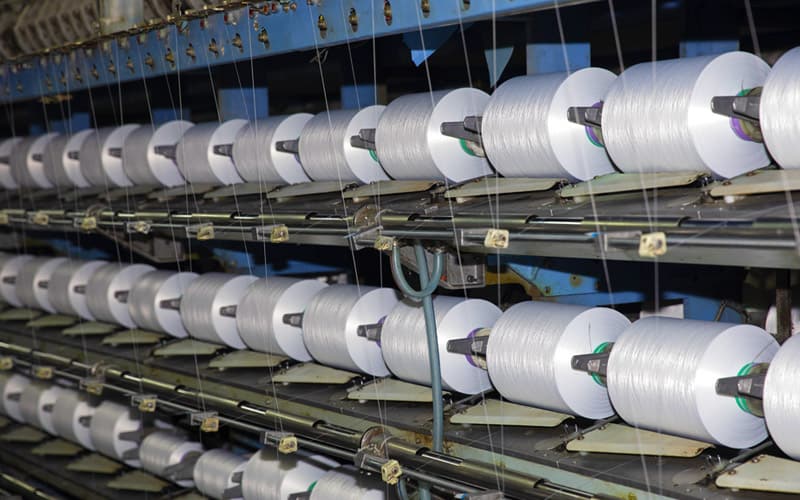1. The chemical molecular structure is different; Nylon […]

1. The chemical molecular structure is different;
Nylon yarn is the general term for thermoplastic resins containing repeating amide groups—[NHCO]—on the molecular backbone. The polypropylene yarn is polypropylene fiber.
2. There are differences in characteristics and performance;
Nylon is a tough angular translucent or milky white crystalline resin. The molecular weight of nylon as an engineering plastic is generally 15,000 to 30,000. Nylon has high mechanical strength, high softening point, heat resistance, low friction coefficient, abrasion resistance, self-lubrication, shock absorption and noise reduction, oil resistance, weak acid resistance, alkali resistance and general solvent resistance, good electrical insulation, and Self-extinguishing, non-toxic, odorless, good weather resistance, poor dyeability. The disadvantage is that the water absorption is large, which affects the dimensional stability and electrical properties. Fiber reinforcement can reduce the water absorption rate of the resin, so that it can work under high temperature and high humidity. Nylon has a very good affinity with glass fiber. It is commonly used to make combs, toothbrushes, clothes hooks, fan bones, net bag ropes, fruit outer packaging bags, and so on. Non-toxic, but not long-term contact with acid and alkali.
The performance of polypropylene yarn The longitudinal surface of polypropylene is straight and smooth, and the cross section is round. The biggest advantage of density polypropylene is its light texture. Its density is only 0.91g/cm3, which is the lightest variety among common chemical fibers, so it is of the same weight. Polypropylene can obtain a higher coverage area than other fibers. Strength and elongation Polypropylene has high strength, large elongation, high initial modulus and excellent elasticity. Therefore, polypropylene fiber has good abrasion resistance; in addition, the wet strength of polypropylene fiber is basically equal to the dry strength, so it is an ideal material for making fishing nets and cables; it has light moisture absorption and dyeing properties and good warmth retention; almost no moisture absorption, but strong wicking ability. The effect of moisture absorption and perspiration is obvious; polypropylene fiber has very little moisture absorption, almost no moisture absorption, and the moisture regain rate under general atmospheric conditions is close to zero. But it has a wicking effect and can transmit water vapor through the capillary in the fabric, but it does not have any absorption effect. Polypropylene fiber has poor dyeability and incomplete chromatogram, but the original solution coloring method can be used to make up for the deficiency; acid and alkali resistant polypropylene fiber has good chemical resistance. In addition to concentrated nitric acid and concentrated caustic soda, polypropylene fiber is resistant to acids and alkalis. It has good resistance performance, so it is suitable for use as filter material and packaging material; polypropylene fiber, such as light resistance, has poor light resistance, poor thermal stability, easy aging, and is not resistant to ironing. However, the anti-aging agent can be added during spinning to improve its anti-aging performance. In addition, polypropylene fiber has good electrical insulation, but it is easy to generate static electricity during processing. Polypropylene has low thermal conductivity and good warmth retention; high strength Polypropylene stretch yarn is second only to nylon in strength, but the price is only 1/3 of nylon; the fabric has stable dimensions, good abrasion resistance and good chemical stability. However, it has poor thermal stability, is not resistant to sunlight, and is prone to aging and brittleness. For this reason, anti-aging agents are often added to polypropylene; it melts near the flame and is flammable. It burns slowly away from the fire and emits black smoke. The upper end of the flame is yellow, and the lower end is blue. Color, exudes the smell of petroleum, the ashes after burning are hard round light yellow-brown particles, which are fragile when twisted by hand.